From Talk to Action: The Steps for Toronto to become a real Challenger City (part 1)
The conversations have been had, now it’s time for action. Here’s how Toronto can break free from stagnation and redefine its future as a Challenger.
13 interesting conversations later, that kind of went all over the place covering politics, strategy, culture, transit, housing, capital, families, architecture, design, lifestyle, traffic, stations, money, venues, futurism as well as some trivial tangents … we are now at the stage of thinking what it might all mean, what could we do, where does Toronto go from here.
Over two posts, a good way to do that might be to think about where we are at on some things, where we could go, look to places that we might gain some confidence from, and then explore what an immediate thing we could do about it is.
Really our goal here is to drive a bit of action, ideally with the City’s blessing, and with some private capital behind it. These things won’t be perfect, but will ideally kick start some much needed momentum, over continued conversation.
With that, we’ll begin.
From: A city without a strategy, lurching from crisis to crisis.
To: A city with a bold strategy, a compelling story and accountability for making it real.
Toronto often finds itself reacting to challenges as they arise, rather than leading with a cohesive, long-term vision, bought into not just by the City, but Torontonians in general.
Virtually every conversation in the series drew on this in some way.
It leaves the city feeling directionless, with no clear path forward, and general tides of anger and the same loud voices when things are clearly not working as they could. See the Gardiner, TTC, public safety, housing etc.
In developing a bold vision for the future, with a clear strategy on how to deliver on it, and creating a compelling narrative, Toronto can shift from crisis management to proactive leadership, driving the city toward a brighter, more intentional future.
Reasons to Believe:
Look anywhere, to any city that reinvented itself. Behind that was a strategy and a story for the future people could buy into. Whether that was a resident, employer, investor, visitor, student, entrepreneur, artist … whatever.
3 places that stand out. New York City in the late 1980s. Medellín in Colombia post Escobar, Manchester in the UK post Arndale Centre bombing. All turned negatives into moments for change, combining big picture with the small things that get the ball rolling, and that hasn’t stopped.
What Toronto Could Do:
Spend a short amount of time and money, pulling together some diverse minds inside the administration, and across the city to set out what might be a winning strategy, and what would need to be true to make it real.
Do it with a proper, and passionate strategist, also ensure the interesting outliers are included, and make it about the future we could have, not the past that has gone. Be quick, and tell the story so that people can buy into it. Ensure there are things to point to early, and gain the buy in for the more challenging stuff. Aiming for bronze is not welcome here.
Biggest Possible Future:
Toronto becomes a poster child of urban reinvention, a beacon city for North America, and Canada’s global city. That will have impacted the city skyline, the current neighbourhoods dominated by single family homes, it’ll likely mean more density, more and better transit, greater entrepreneurship, climate resilience, big economic engines, stronger regional connectivity by air and rail and soft power developed through cultural exports.
From: Where dreams come to die at a desk.
To: Where work is as inspiring as the skyline.
For many, work in Toronto can feel stifling, with creativity and innovation taking a back seat to routine tasks. All too often the culture in our major employers is somewhat flat, with entire industries like banking lagging behind their global peers.
This diminishes the potential of both the workforce and the city itself. When a city’s employers are slow to innovate, typically choosing to follow, then what chance does a city have to be a creative, and innovative hub.
Part of transforming a city into a Challenger is about creating the work environment and culture that embraces the Challenger mindset too. Invoking that spirit of “we try harder” is as important in a company that isn’t the market leader, as it is in a city.
That means making work more interesting, pushing harder on innovation over managing the status quo, it also means making work environments awesome. If executives want their employees back in the building, then they need to offer more than a hot desk. That means making offices designed to fuel creativity, collaboration and a sense of purpose.
Reasons to Believe:
Lobby Fest in Calgary is a rather nice example of a small activation for how we can rethink the welcome mats to the places where we go to work.
On a grander scale, it’s worth looking at the likes of working spaces in cities that are not just about towers in the sky. London has some excellent examples in the vicinity of the various rail termini developments like King’s Cross with Coal Drops Yard or around Liverpool Street. Station F in Paris acts like a campus in the city, while Amsterdam mixes its knowledge work across a mix of old and new.
What Toronto Could DO:
Establish a festival with employers and design firms to develop a series of creative spaces in underutilised commercial buildings throughout the city, such as vacant floors of towers, quiet areas of the PATH or many of the cacophonous lobby spaces. Create a prize and some recognition for the best ideas, and encourage major employers to scale what is successful.
Biggest Possible Future:
In its most expansive form, Toronto could become a global capital for creative industries, with a network of interconnected hubs that attract top talent from around the world. The city’s skyline could feature iconic workspaces designed by leading architects, making Toronto synonymous with innovation and creativity.
From: Where the commute can be as long as the workday.
To: Getting to and from work becomes meaningful.
In Toronto, the daily commute can be a significant source of stress, often taking up as much time as the workday itself. This can lead to burnout and reduce the quality of life for many residents. But what if commuting was a meaningful, even enjoyable part of the day? By improving transit systems and making the journey to work more efficient and pleasant, Toronto can transform how its citizens experience the city daily.
Reasons to Believe:
Where do we start. Pick a European or Asian city and you’ll likely see how transit can be something that’s actually nice, not just a base level of service. Toronto disrespects its legacy streetcar system. Zurich, Vienna, Manchester, Budapest, Berlin all offer examples of trams that glide through the city on time, beautifully designed transit stops, and seamless connections so commuting is something that’s kinda nice, not another chore.
What Toronto Could Do:
Toronto is building a lot of new transit, though much of it outside of the core. Meanwhile much existing transit has been neglected. Toronto could take something like the King Street Pilot (are you allowed to call something a pilot more than half a decade later?) and LRT-ize one of the 4 east/west streetcar lines. That means rethinking the spacing of stops, turning stops into stations, removing on-street parking, likely removing cars, updating tracks & switches, blending in better pedestrian and cycling spaces and rebranding the route to tell the story.
This should prove the underutilisation of the transit we already have by demonstrating the potential for other routes with an enhanced passenger experience.
Biggest Possible Future:
Toronto could leapfrog New York City, Mexico City and Vancouver as the best public transit systems in North America. Done right, with the combination of building new infrastructure, and hacking the legacy systems around passenger experience, Toronto could create a transit system that is an envy of many more classic transit centres. Paris, London or Singapore could look here, rather than the other way around.
From: Sterile public spaces.
To: Accessible and abundant social spaces.
Toronto’s public spaces, though plentiful, tend to lack the vibrancy and accessibility that bring communities together. Sterile, underused areas fail to inspire the social interactions that make city life rich and engaging. It’s no use just having the public space that may have looked nice on a rendering, that misses the soft edges and amenities that ensure people use it. By transforming these spaces into accessible, abundant social hubs, Toronto can foster stronger community connections, support local culture, provide leisure space and create a city where people want to gather and spend time.
Reasons to Believe:
New York City has Bryant Park for something a bit bigger and flashier in the heart of midtown, but then also has Paley Park as the transformation of a little space in Manhattan too.
It’s hard to point to a single European example, where the typical public plaza or park will almost always include cafes, public art and pop up events to make the most of it as a public living area. Bologna is nice though. So is Granada, Even Antwerp does this well and it rains there, like a lot!
What Toronto Could Enable:
Toronto could launch a program of partnership to transform underused urban spaces into vibrant parks and social hubs. If that’s underneath a tower populated by a big bank, well that’s a nice reason for them to invest in it as a signal they care about employees wanting to be in the office, as opposed to telling them.
It might mean the city making it easier for an entrepreneur to pop up a cafe in a plaza during the warmer months. Away from the big towers, an initial project might expand what’s been rather nice with the Bentway to attempt to beautify the underneath of the Gardiner through public art and walking trails.
Biggest Possible Future:
In the grandest vision, Toronto could become a city known for its expansive, interconnected public and green spaces that bring nature and social life into the heart of the city. These spaces would serve as community gathering points, outdoor hotspots for those without private fresh air space, somewhere to have a date or a meeting whether it was planned or not, all. contributing to the city’s reputation for urban liveability.
From: A city of many cultures, but disconnected.
To: A city of cultural corridors.
Toronto is one of the most multicultural cities in the world. I’m sure you’ve heard that more than a few times. Despite that, the diverse communities and businesses can often feel disconnected from one another. Cultural richness should be a cohesive force that binds the city together, rather than existing in pockets, especially when many are poorly connected by transit. Establishing cultural corridors that celebrate and connect these diverse communities would unleash one of Toronto’s genuine differentiate attributes.
Reasons to Believe:
Georgetown on Penang has skilfully blended its diverse cultural heritage into the urban fabric, a bit of Malaysia’s global identity. By designating entire streets and neighbourhoods as cultural zones, the city celebrates its multicultural identity in a way that’s both inclusive and vibrant. Cities like Hong Kong and Singapore, while perhaps considered less ethnically diverse do an excellent job of connecting food culture across a city, giving reasons to explore, often on transit.
What Toronto Could Enable:
The City of Toronto could initiate a “Cultural Corridors” project, starting with a pilot in one of its most diverse neighbourhoods. While much focus tends to fall on the downtown, the hidden gems could benefit from being better connected. While Toronto does the annual neighbourhood street festival quite well, we could be more creative about how we bring new people into new neighbourhoods. In some cases, it might just be highlighting cycling or transit routes to certain restaurants beyond the core that give people a reason to get out of their bubble without the car.
Biggest Possible Future:
Toronto could evolve into a city renowned for its vibrant, interconnected cultural districts. These corridors would not only celebrate the city’s diversity but also ensure tourists and global attention falls across the city, making what are now outposts in Scarborough or on St. Clair Toronto must-visit destination for cultural explorations beyond the usual suspects.
From: Where artists can't afford to create.
To: The creatives’ paradise.
As costs in Toronto rise, artists and makers are finding it increasingly difficult to live and work in the city. This threatens to drain Toronto of its creative energy, as the very people who make the city vibrant are pushed out. By making space and support for the arts a priority, Toronto can transform into a paradise for creatives, where artists are not only able to survive but thrive, contributing to the city’s cultural and economic vitality.
Reasons to Believe:
Montreal is the obvious place to point to in Canada for this, where much investment goes into ensuring local creatives, artists and cultural types can use the city as a canvas. That stems from the city being very much affordable as a place to live compared to Toronto, but also ensuring public art and performance spaces are available so the culture has an outlet.
Lisbon is perhaps another good example of a haven for creatives in recent years, thanks to a combination of affordable living (though that is now under pressure) and government-backed initiatives that support the arts. LX Factory, a repurposed industrial complex, houses galleries, studios, and cafes turning it into a creative hotspot.
What Toronto Could Enable:
Toronto could launch an “Arts Incubator” program, picking underutilised space in the city. This would be an ideal opportunity for private funding from the real estate world or financial institutions to support the conversion of bland commercial space into affordable studios, galleries and venues providing artists with the resources they need to thrive.
This could actually be quite a unique and new vibe that Toronto lays down. While the post-industrial, exposed brick aesthetic has been played out virtually everything, Toronto’s canvas can be more concrete, steel and glass finding a usage beyond the generic condo and office vibe.
Or maybe Toronto steals the remnants of Just for Laughs from Montreal and re-establishes the world biggest comedy festival to give Melbourne and Edinburgh a run for their money?
Biggest Possible Future:
Toronto could become a global arts capital, with entire neighbourhoods dedicated to creative industries. The city would attract artists from around the world, fostering a vibrant arts scene that drives cultural tourism and economic growth.
From: A nice, but forgettable waterfront.
To: A globally renowned signature of the city.
Toronto’s waterfront, though pleasant, lacks the distinctive character that would make it a true signature of the city. A well-designed, iconic and amenity rich waterfront can become a powerful symbol of urban identity and a major draw for both residents and visitors.
Toronto has spent a long time making strides with its waterfront, with interesting little parkettes and pockets of intruige. There is also to be the controversial redevelopment of Ontario Place, that even if you do like the idea of a spa & waterpark, does lack a bit of finesse. The redevelopment of the Don Lands is impressive geographically, but also another demonstration of underwhelming when it comes to the built environment.
Toronto likely needs to do two slightly contradictory, but ultimately complementary things with the waterfront, think bigger, and think smaller. What is big and will draw attention from the world, what is small and will make individuals smile.
Reasons to Believe:
Helsinki, Finland has revitalised its waterfront through projects like the Löyly sauna and the Allas Sea Pool, combining stunning architecture with public accessibility. Meanwhile Chicago is probably the star for lakefront redevelopment, with the Bean being the Instagram hotspot, as other places require exploration on foot or by bike.
There isn’t and shouldn’t really be a blueprint for waterfront, but the key principle is that it’s more than just a nice place to walk. Stopping for a bite to eat, sitting for a drink, throwing in physical activity, cultural locations, striking architecture and stuff that might be a bit miscellaneous elsewhere really makes it a place.
Some lesser played out favourites might be Hamburg, Dusseldorf, Liverpool or Malmo … and then there’s the big shots like Sydney and Copenhagen.
What Toronto Could Enable:
Toronto could kick off a design competition to challenge some of the traditional thinking currently in place. Ideally with a framing that thinks really big, bigger than we normally think possible. The sort of big that makes some cities stand out over others when it comes to waterfront. That might be a single signature piece of architecture, or it could be something that traverses the entire shoreline.
The second framing could be the 100 small things we just do. Maybe that’s making the world’s best corner store where you can dip your feet in the water while grabbing a cold beer or soda. It might be a diving board for the perfect cannonball photo. Perhaps a floating restaurant. A local ferry service. A pier walkway arcing around and over the water. A slightly submerged sculpture garden. Fire pits for the cooler months. Oh, and maybe bring back that Harbourfront ice rink because y’know, it was nice.
Biggest Possible Future:
With various landmarks on the waterfront, the view of the city from the lake becomes more iconic that glass towers augmented by the Skydome and CN tower. Coupled with the continuous emergence of useful, as well as fun, amenities and attractions that pop up on an almost weekly basis, Toronto’s waterfront is a signature move of the city locally and globally.
From: Stations are boxes where people get on/off trains.
To: Stations as commercial and cultural nodes.
Transit stations in Toronto are often seen as purely functional spaces—places to quickly pass through on the way to somewhere else. It might actually be one of the reasons why stations have become less pleasant places to spend any time in, and why the TTC is seen as a little more dangerous these days. Stations have the potential to be much more. By transforming them into vibrant commercial and cultural nodes on the transit network, Toronto can turn these transit hubs into destinations or community assets in their own right, enriching the urban experience, supporting the local community and providing a new outlet for local entrepreneurs.
Reasons to Believe:
Many Asian cities have transformed their transit stations into vibrant public spaces with shops, galleries and markets. It’s super cliche, but the MTR in Hong Kong is as much a real estate developer as it is a transit operator. The former financially feeds the latter.
Dusseldorf turned central tram stops into something more akin to art installations, you’ll find a similar vibe on the Stockholm Metro. Madrid turned the heritage station building of Atocha into a botanic garden with the new platforms bolted on.
Between Manchester and Leeds, many stations feature fantastic traditional pubs built into the platforms themselves. Then there’s the ubiquitous coffee shop or bakery type outlets on, well, pick any German system, that have a bit nicer vibe than the usual Gateway news stand you’ll find here.
What Toronto Could Enable:
The TTC could designate a series of stations to test with turning into greater commercial or community hubs, perhaps through art installations or pop-up food & beverage. We’ve seen how this can work in a big destination station like Union, but this could be applied across the network with benefits including non-fare revenue generation, an increased sense of security and safety, as well as an additional reason to use transit because there’s an awesome new destination across town. Private investment from retailers, entertainment companies and local artisans could fund the transformation,
Biggest Possible Future:
Toronto’s transit stations could become vibrant hubs of activity, featuring destination retail, dining and cultural experiences, not to mention added convenience through transit. These stations would be destinations in themselves, contributing to the city’s economic vitality and enhancing the daily commute, or weekend wandering so the system becomes more viable that a way to get into downtown and back.
From: Where runners & cyclists jostle for space.
To: Dedicated tracks and circuits to blow off some steam.
Toronto’s current infrastructure often forces runners and cyclists to compete for limited space, leading to conflicts and safety concerns with drivers and pedestrians alike. High Park being a playground for the lycra brigade is certainly a debate now the drivers have been squeezed out. Others might feel like navigating the waterfront can feel like a game of Frogger at times!
Creating dedicated destination tracks and circuits for these activities would not only reduce friction but also encourage healthier lifestyles by making it easier and more enjoyable to exercise outdoors.
Reasons to Believe:
Various cities have created rooftop running tracks, a bit like White Collar Factory in London. You might also already spot one if you look from some of the towers downtown in Toronto. We might want to aim bigger than that though, and look to Copenhagen or Singapore and how they’ve designed recreational cycling routes to complement cycling as a commuting activity.
Or, then there’s Bangkok and the SkyLane cycling track on the perimeter of the main airport. A correlation could also exist between cyclists and plane spotters too!
What Toronto Could Enable:
Toronto could launch a “Healthy City” initiative, starting with the creation of dedicated running and cycling circuits in key areas. That might be setting specific times in hotspots that exist already like High Park and the Don Valley, so cyclists get their space without scaring off families from enjoying the same space at other times.
Private sponsors with an interest in the fitness and sports industries could fund the development of more dedicated tracks, ensuring they well maintained and available at all hours. This may spur development in new areas of the city away from dense neighbourhoods and corridors for commuting.
Biggest Possible Future:
Toronto could become known for its extensive network of fitness circuits and trails, making it a destination for health and wellness tourism or international events outside of the usual stadia. The city’s commitment to active living could set a new standard for urban health, attracting new residents and supporting longer term healthcare in more preventative manners.
From: Condos that cramp family life.
To: Apartment living for urban families.
The rise of condos in Toronto has provided housing (and investment opportunties) for many, but often at the expense of space and comfort for families. Urban living shouldn’t be a compromise for those with children as they choose between giant towers of 1 and 2 bedroom boxes, or a life in the suburbs in a traditional single family home. Families should be able to enjoy the benefits of city life without sacrificing space or convenience.
By designing apartments, and surrounding neighbourhoods with families in mind, Toronto can ensure that the city remains a viable and attractive option for urban families while also staying resilient with neighbourhoods that host diversity. When families can choose to life in, and around, downtown, the area is a place for all hours, and not just those that work a 9-5.
Reasons to Believe:
Singapore has pioneered the concept of family-friendly urban living with its well-designed public housing that includes spacious layouts, integrated amenities, and access to green spaces.
Many of the other usual suspects will pop up here … think Vienna, Copenhagen, Barcelona, Edinburgh where it’s perfectly normal to live in an apartment in and around the city centre while raising a family.
What Toronto Could Enable:
Toronto could designate an area of the city to waive some of the traditional planning regulations, like single staircases or setbacks, and pilot a “Family Urban Living” project, starting with a mixed-use development in a central neighbourhood. Private developers, in collaboration with the city, could design family-centric, flexible, apartments that include communal play areas, daycare centres and proximity to schools and parks.
Biggest Possible Future:
Toronto could become a leader in family-friendly urban living, with entire neighbourhoods standing out as global destinations to live, visit or work in because they anchored their design to cater to the needs of families. This would not only retain the current residents, and prevent a life stage exodus to the suburbs but also attract new families or even employers to the city, contributing to a more diverse and dynamic urban population. If Toronto is the Challenger City for families, that can only be a beacon for employers and international visitors alike.
We’re only part way through…
As we wrap up Part 1 of our journey through what Toronto could become as a true Challenger City, it’s clear that the conversations have been as wide-ranging as they’ve been insightful. From the big ideas to the small, seemingly trivial details, we hope it’s beginning to lay out a vision that’s bold, ambitious, desirable and most importantly, actionable. But this is just the beginning.
What we’ve covered here is about shifting the mindset—moving Toronto from a city that reacts to crises to one that proactively drives its future. We’ve seen examples from cities around the world that have turned challenges into opportunities, and now it’s time for Toronto to take those lessons and run with them.
But the story doesn’t end here. In Part 2, we’ll dive deeper, looking at more specific, tangible steps Toronto can take right now to start building that future. We’ll explore additional areas where the city can innovate, break from the status quo, and truly lead by example.
So stay tuned—there’s much more to come as we continue to imagine, challenge, and ultimately, transform Toronto into the city it’s meant to be.
And in the meantime, let us know what you think!



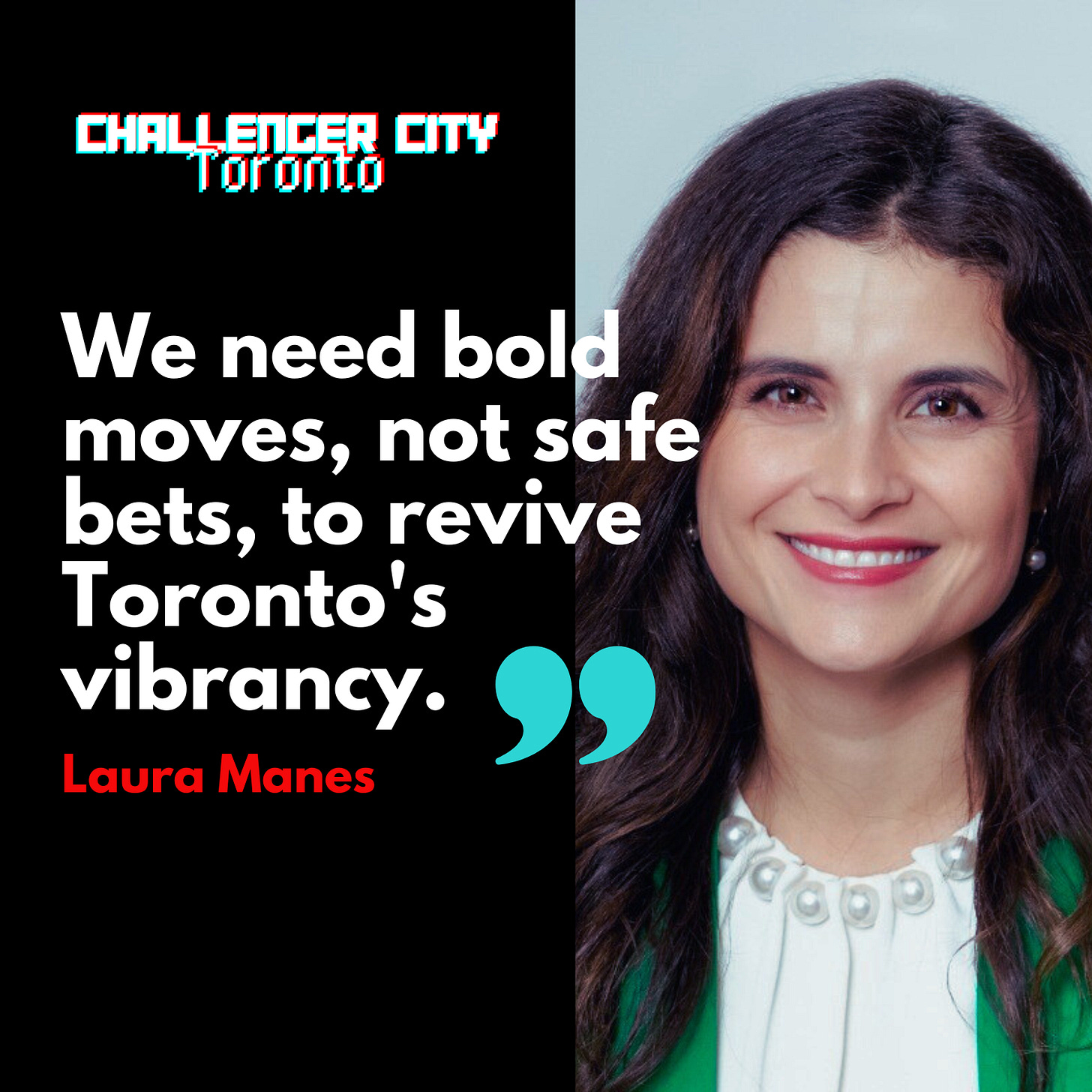
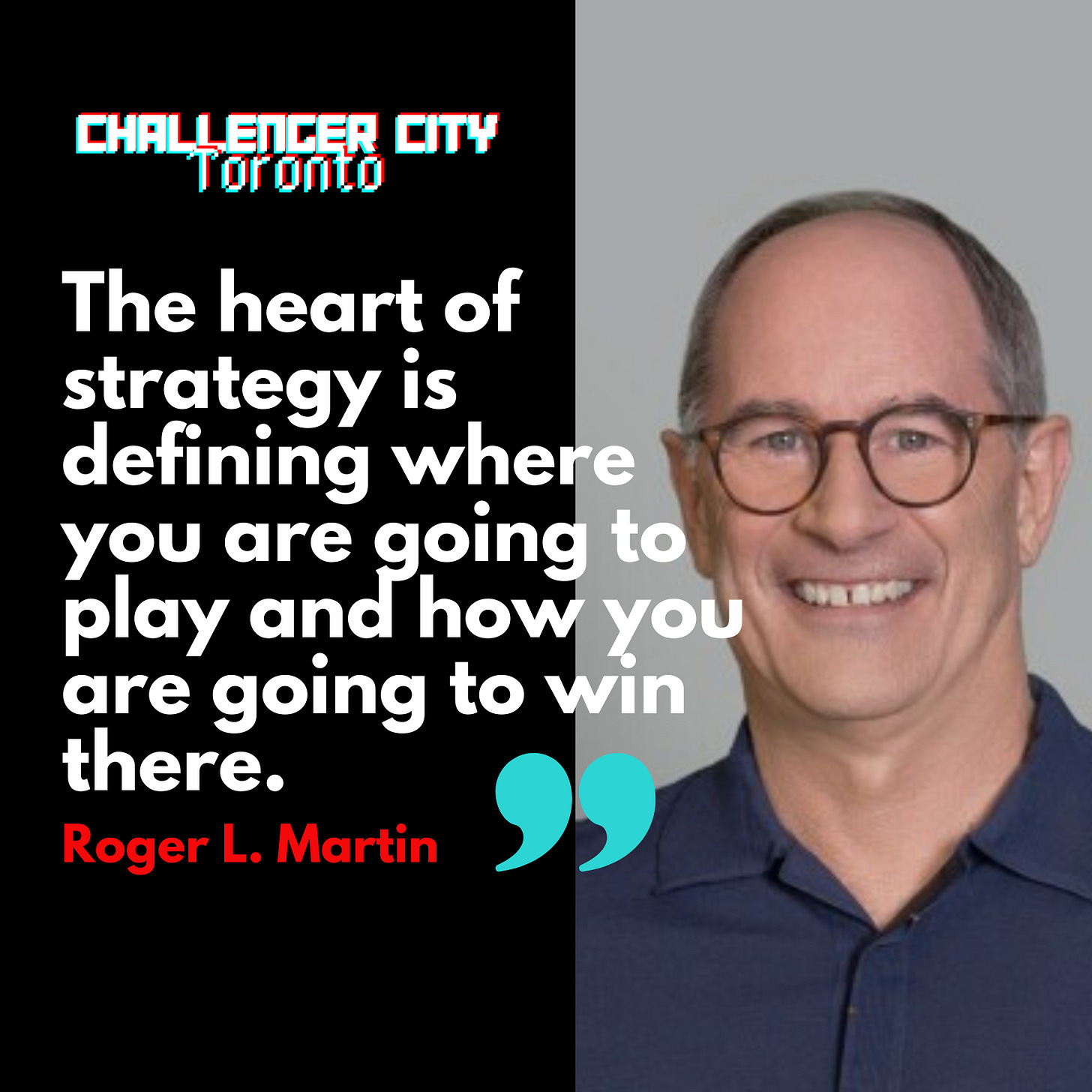
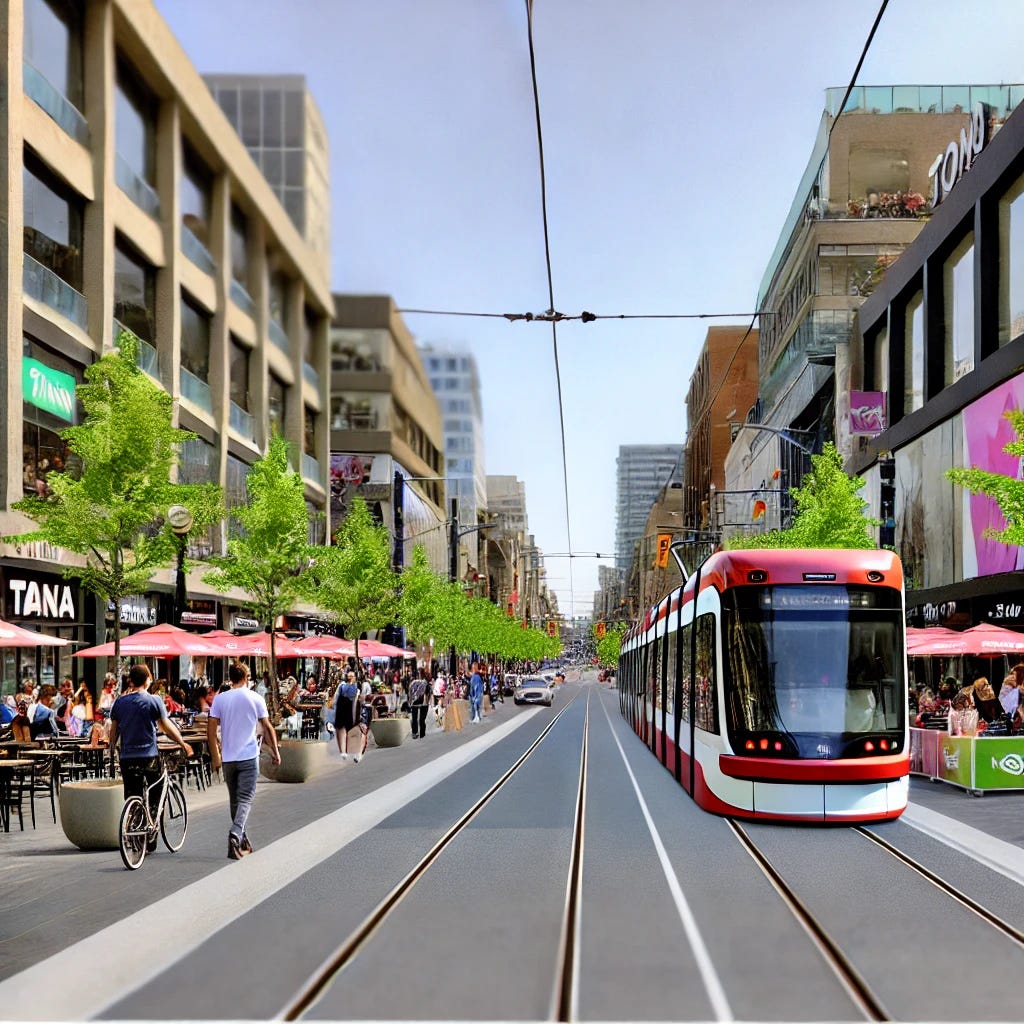

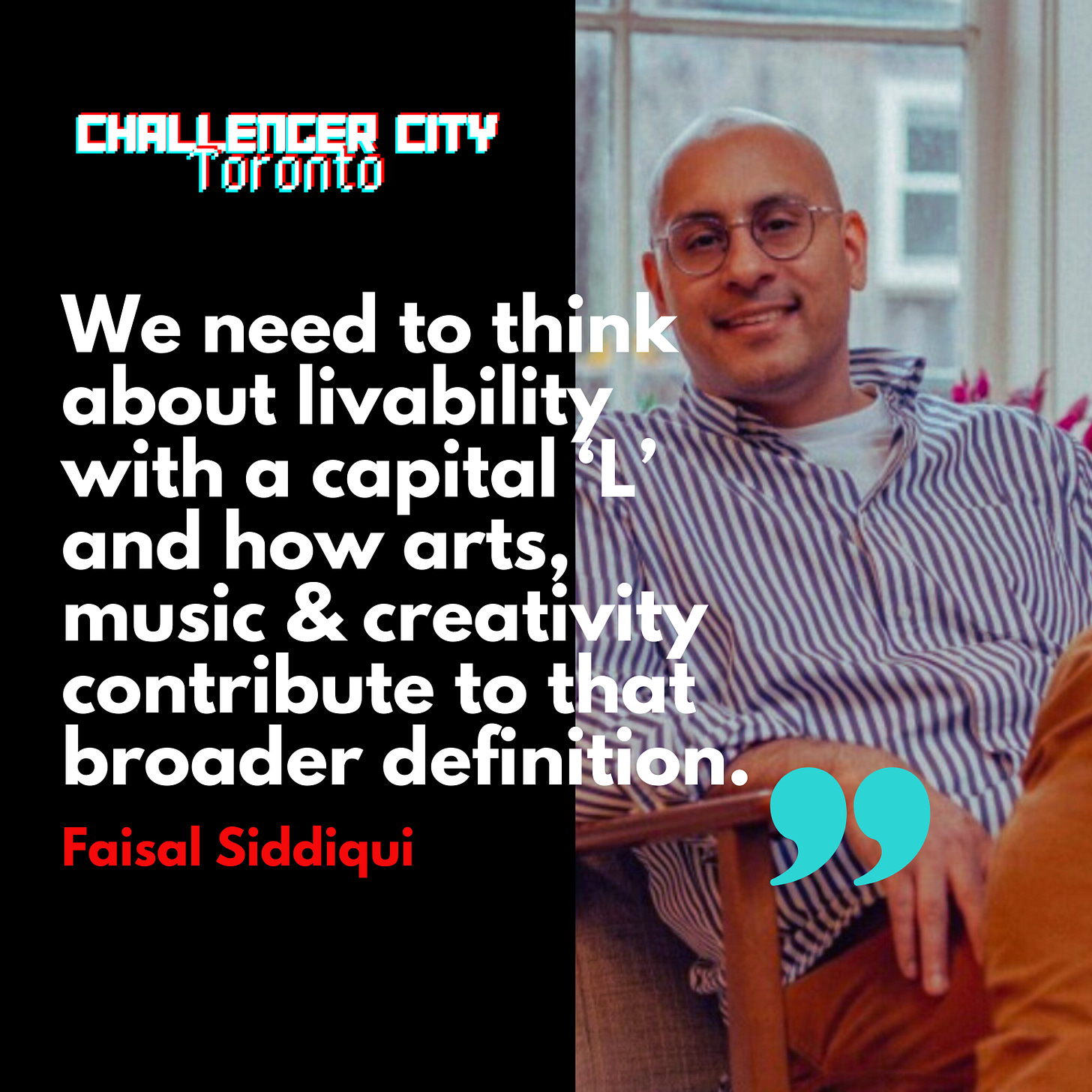
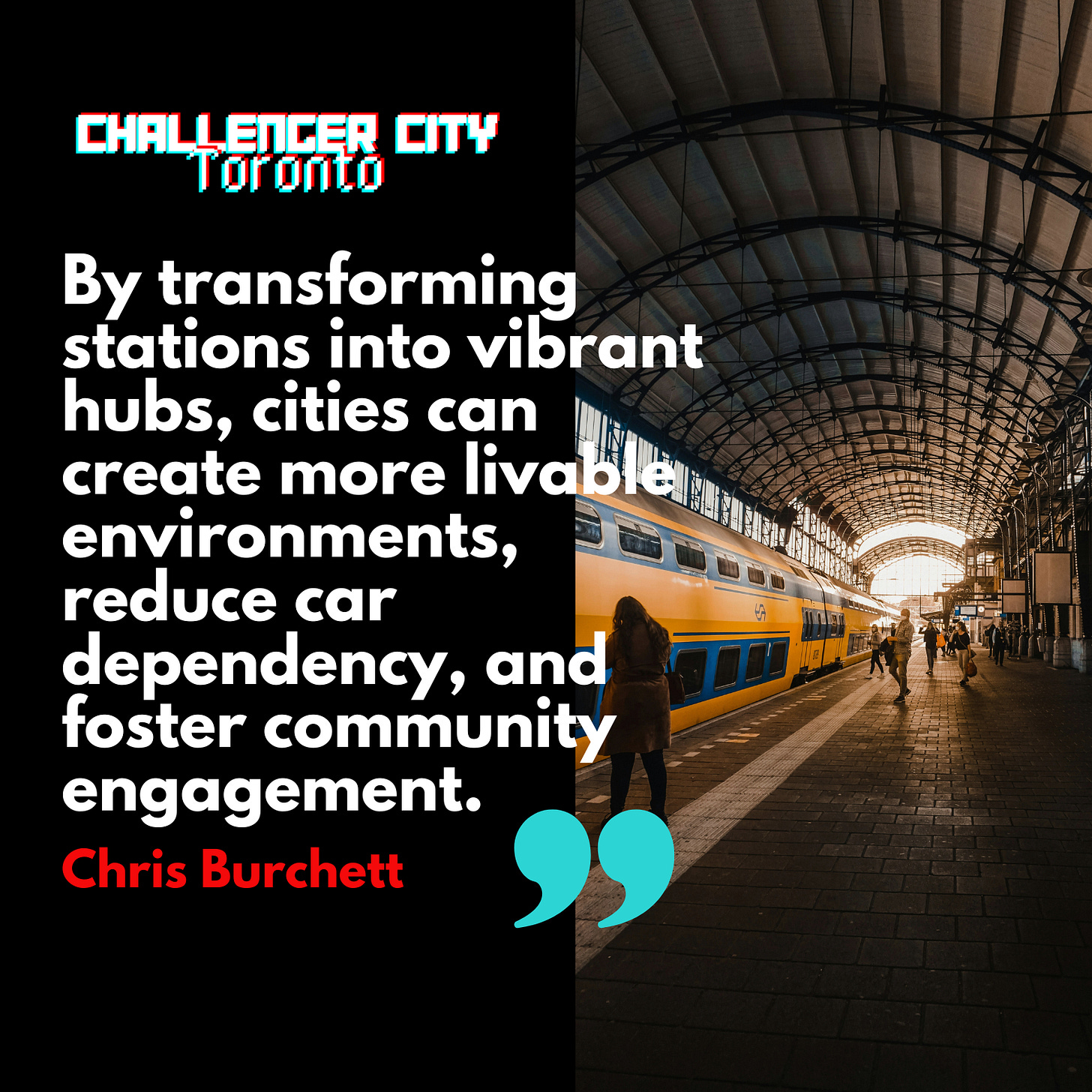
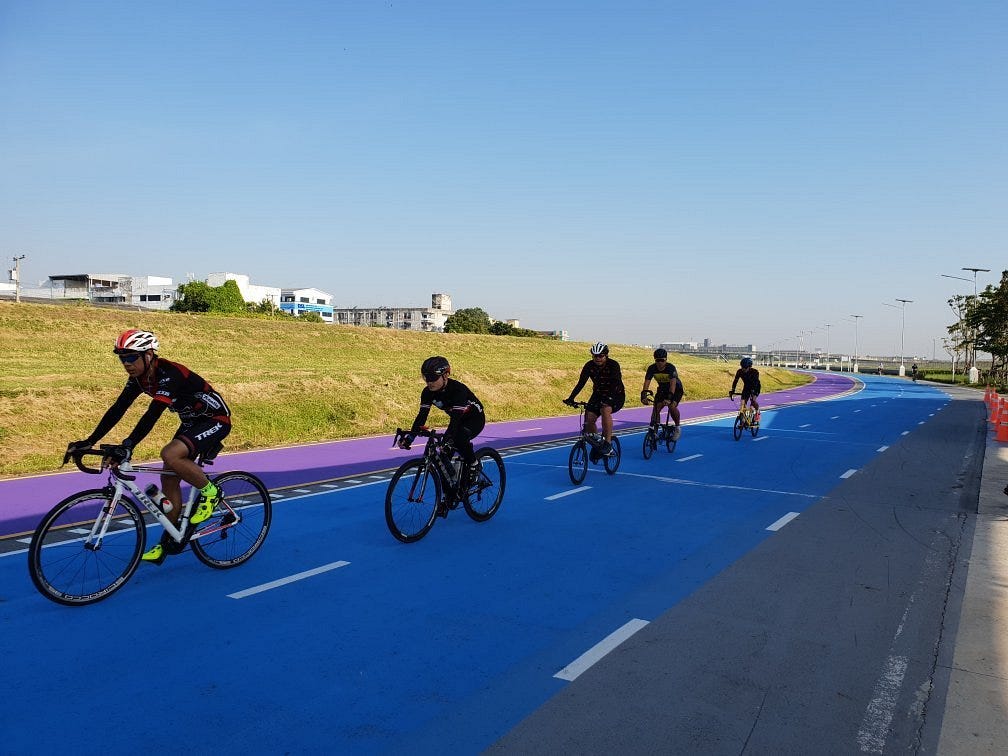
Love these ideas. Would so much like to be involved in the two transportation ones. Hope these ideas gain some traction with both decision-makers and those who can get these happening -- and that resources are made available to tackle them.
Yes Yes YES! More of the artistic inspirations please, of all sizes - more concerts in the Music garden, more tiny free libraries of books+art+puzzles+plants (Portland Oregon for inspiration). More colour, more pops of little joys all over...and joys that are accessible for everyone, rich or not, visitor or not, Mon-Fri or weekends...